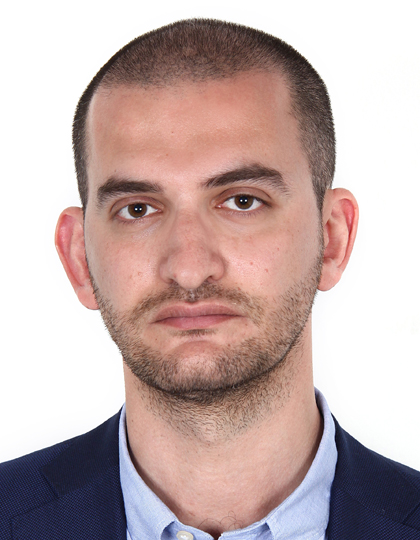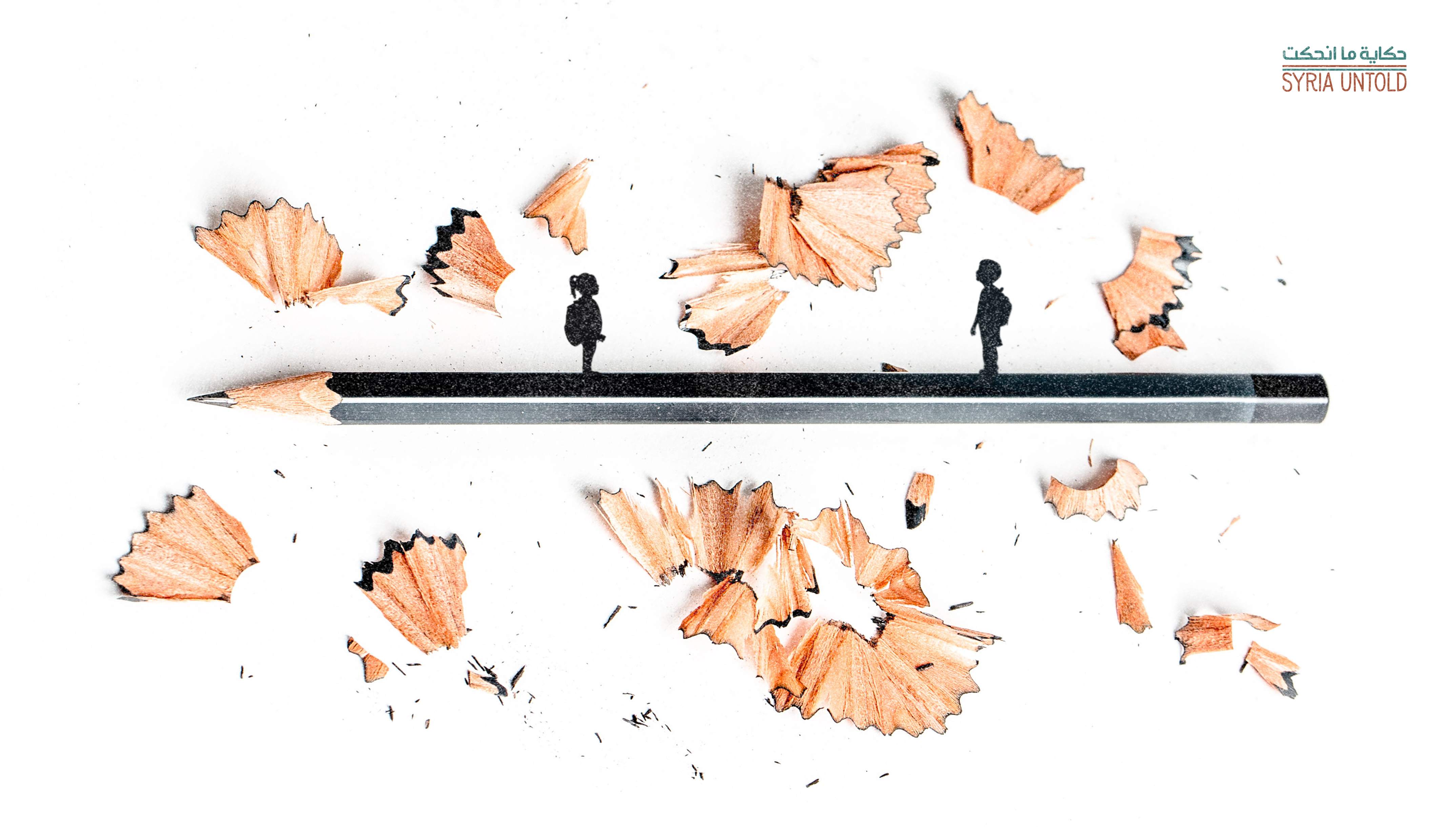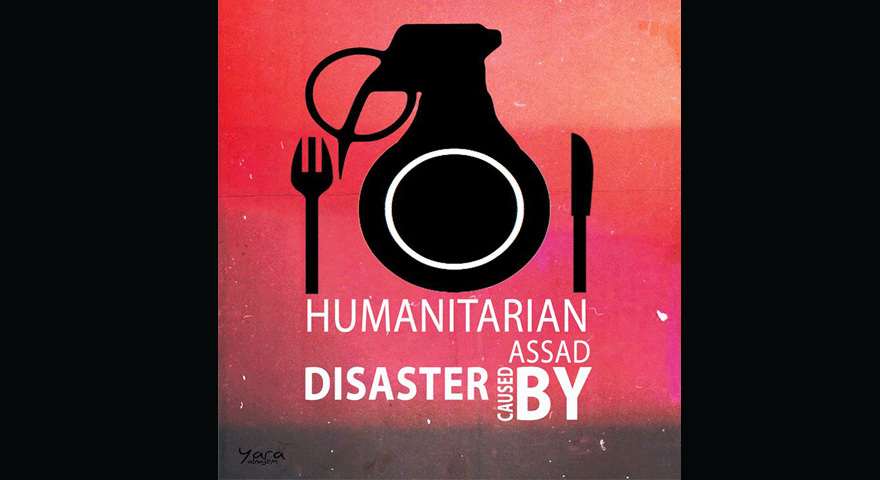This article is part of a dossier in partnership between SyriaUntold and Orient XXI, exploring the consequences of the devastating earthquake that struck Turkey and Syria in February 2023.
In the early hours of February 6th, 2023, a severe winter storm hit the Lebanese capital, Beirut. Amidst the howling winds and torrential rain, an unprecedented earthquake struck, unlike the transient small earthquakes that go unnoticed every year or two. This earthquake shook the ground and buildings of Beirut, terrifying its inhabitants, many of whom evacuated their homes even before the second earthquake hit shortly after.
Within minutes, the initial shock wore off, and social media platforms started sharing jokes and sarcastic remarks about the event. Many didn’t realize that hundreds of kilometers to the north, the life of tens of thousands of people were affected forever. The residents of Beirut, who experienced only fear without significant destruction, assumed that the same fear had gripped the neighboring areas. Amidst the humor, reassurances, news, and rumors, blurred images began to emerge from the hardest-hit regions. The image of the massive and famous al-Tawheed Mosque in Aleppo, with its towering minarets, was particularly shocking, foreshadowing the worst news that has yet to be clearly revealed. It was followed by an image of a collapsed building in al-Aziziyah district in Aleppo, with reports of casualties and people trapped under the rubble. As hours passed, the true extent of the catastrophe unfolded in the initial chaos caused by the immense earthquake in distant Beirut. This raised concerns about the situation in southern Turkey, Aleppo, Idlib, and their surrounding regions.
The image of the massive and famous al-Tawheed Mosque in Aleppo, with its towering minarets, was particularly shocking, foreshadowing the worst news that has yet to be clearly revealed.
On the Syrian side, the earthquake had a widespread impact, particularly in the provinces of Aleppo and Idlib, in the areas under the Syrian regime control and the opposition forces. The earthquake struck during a harsh winter season, with freezing temperatures and a storm that lasted for several days. This added to the suffering of the population who was already exhausted on both sides of the conflict.
Despite the different circumstances and populations in each controlled area, similar experiences unite the Syrians here and there. In areas under regime control, the state appeared helpless and powerless, lacking the necessary resources, capabilities, and integrity to fulfill its role in addressing such a catastrophic event. Conversely, in opposition-held areas, there was no functional State structure, leaving the population reliant on limited initiatives and projects by civil society organizations with meager resources and inadequate individual support to effectively respond to the disaster.
Following the earthquake, I traveled to Turkey to volunteer with an organization involved in relief efforts. Initially, reports on the Turkish government's response gave me the impression that they were falling short and delayed in their efforts to address the disaster in terms of speed and the scale of intervention. However, upon reaching the affected areas in Turkey and witnessing the extensive damage and its widespread impact, taking into account the additional severe weather conditions, my perception shifted to a question: If a country with a strong government, advanced infrastructure, and experience in disaster response struggled to provide sufficient aid in the first few days due to the severity and extent of the damage, then what is the situation in Syria, where there is no effective state, no resources, and no support?
The information and testimonies in the following paragraphs are based on various sources, including interviews conducted with three relief and humanitarian activists in the cities of Aleppo, Idlib, and the countryside of Idlib.
In areas under the control of the Syrian regime in Aleppo, available information indicates that the population was already in a state of unprecedented exhaustion even before the earthquake occurred, 12 years into the conflict in their country. This exhaustion was a result of inflation, declining income, and deteriorating living conditions. Particularly in areas with a Christian majority, a large segment of the population became reliant on aid and considered the funding received by the organizations as designated for them and their fixed right.
The state of the affected population in Aleppo and the relief efforts reaching them can be divided into two parts, with few exceptions: the part that affects the Christian population and the one affecting the Muslim majority. This division is not based on sectarianism in the usual sense of the word, but rather on the advantages enjoyed by the Christian community, which were not available to their Muslim neighbors. These advantages included a strong network of solidarity within churches, close connections with supportive entities in the West (both religious and non-religious), and a certain level of tolerance or leniency from the regime towards these activities within the Christian community.
Regarding these two categories, affected individuals received informal aid without systematic distinction between the level of damage. These were facilitated through unofficial individuals and local groups, which relied mainly on Syrian expatriates. Testimonies from citizens who initiated assistance initiatives through social media highlighted some challenges, such as difficulties in collecting and transferring donations to Syria. Additionally, the reception and distribution of aid within regime-controlled areas did not follow a clear methodology, particularly in the early days following the catastrophe. Finally, there was a lack of early awareness to recognize that this extensive wave of compassion and unity, manifested through support and donations, would not be sustained for long.
There was a lack of early awareness to recognize that this extensive wave of compassion and unity, manifested through support and donations, would not be sustained for long.
In areas under opposition control, the situation was noticeably worse. While the regime criticized the lack of official external support for earthquake victims in its areas, opposition-held regions faced paralysis due to the closure of vital routes connecting them to Turkish territories, where support and aid convoys passed through. Diplomatic disputes and attempts to exploit the disaster for political gains exacerbated the situation, with little concern for the real victims. The Turkish side of the border was fully occupied with addressing its own casualties, further limiting assistance to the opposition-held areas.
In both controlled areas, a reasonable level of daily necessities, such as food and clothing, was secured for a significant percentage of the affected population. However, shelter posed a major challenge. The diminished purchasing power in regime-controlled areas hindered the victims from finding suitable housing. As a result, mosques and churches temporarily served as collective alternatives, providing shelter for them until they could repair their homes with limited individual efforts. In opposition-held areas, there was a severe shortage of the tents required, even when some funds were available to meet this need.
Off the Richter Scale: Tracking Misinformation in the Aftermath of the Kahramanmaras Earthquake
24 May 2023
One notable aspect in both regions was the direction of aid and relief efforts towards prominent or well-known areas, such as urban centers, while neglecting peripheral areas. Supporters frequently questioned which entities were trustworthy to direct their donations and assistance. In regime-controlled areas, people cautiously relied on relatives, acquaintances, certain unofficial groups that operated discreetly to avoid the regime's scrutiny, and some licensed entities which enjoyed a good reputation, such as al-Ihsan Charitable Society. In opposition-held areas, the White Helmets and Molham Volunteering Team were the main entities for support.
Testimonies and observations from regime-controlled areas highlighted the lack of reliable evidence regarding the delivery of aid announced by certain countries to earthquake victims. Some aid was even reportedly sold in markets. Cases were documented in which it was not possible to deliver extensive aid to areas controlled by the regime for bureaucratic reasons. Others revealed the attempt of the Syrian Trust for Development to monopolize and oversee the distribution of such aid. Among the recorded testimonies, one account, supported by official Syrian media, reported the arrival of over 150 planes and numerous trucks transporting hundreds of tons of relief aid. However, it was observed that the distribution did not adequately address the needs of the affected population in a transparent and equitable manner.
After the initial shock subsided during the first two weeks following the earthquake, various engineering surveys were conducted to assess the damaged houses in regime-controlled areas. These surveys were carried out with varying levels of professionalism, either by local Christian and non-Christian associations, or through the involvement of the Engineers Syndicate, such as the Department of Ecumenical Relations and Development of the Greek-Orthodox Patriarchate of Antioch & All East and the Franciscan Monastery in Aleppo. However, despite promises of restoration efforts based on these surveys, to this day, only limited restoration work has been accomplished. The number of repaired houses and the quality of the chosen restoration have been insufficient in many cases. As a result, some had to rely on their own resources to repair their homes as best they could, seek assistance from relatives abroad, or even resort to loans. Others returned to their unrepaired homes, despite the risks. The state of displacement in shelters, coupled with the decline in resources necessary to attend to the refugees' needs, prompted many to search for individual but inadequate and sometimes dangerous solutions. It is worth noting in this context that the cost of construction materials and restoration has significantly increased, while there is a severe shortage of skilled labor.
The cost of construction materials and restoration has significantly increased, while there is a severe shortage of skilled labor.
In the Jibreen area near Aleppo, 500 temporary housing units were provided as a starting point. However, it remains uncertain who will benefit from these units, as rumors circulated that they would be allocated to displaced persons, not exclusively earthquake victims.
In opposition-controlled areas, the most heavily affected regions included A’zaz, Afrin, Jindires, Salqin, Harem, Sarmada, and al-Dana. In some parts of these areas, up to 40% of buildings were severely damaged. The fact that many buildings had two or three floors, rather than being high-rise structures, somewhat mitigated the impact of the earthquake.
What is the situation today?
More than five months after the disaster, the most significant effects of the earthquake in various affected Syrian regions are still evident. The apparent return to normalcy masks significant hardship, and residents have become accustomed, over the past decade, to relying solely on their own capabilities. With each new tragedy, whether from bombings, inflation, or earthquakes, they are pushed further into new depths, lamenting their current harsh circumstances compared to the relatively less severe challenges they previously faced.
The apparent return to normalcy masks significant hardship, and residents have become accustomed, over the past decade, to relying solely on their own capabilities.
Contributing to this outcome is the fact that the scale of the disaster was immense, and "no country in normal circumstances can be prepared to deal with a catastrophe of this magnitude," as stated by a humanitarian activist in rural Aleppo. Moreover, the severe deterioration of living standards over the past decade has deprived people of most of their financial and psychological self-sufficiency, leaving them unequipped to confront and adapt to these circumstances. On the other hand, the disaster brought attention to Syrians and attracted some support and aid. However, the focus on the earthquake and its victims has deprived other vulnerable groups of essential support, such as those in need of critical medical and pharmaceutical assistance.
The urgent need remains in various affected regions to identify and classify all those who were affected and distribute them into categories based on the extent of damage and the level of assistance required. It is crucial to allocate sustainable aid, including housing, initial support for rebuilding lives, and essential facilities such as schools. There is a need to provide legal solutions for collapsed or at-risk buildings, and to address the issue of essential documents’ loss. Undoubtedly a specialized psychological support, free from unprofessional practices, is fundamental for a wide range of residents in the affected areas, regardless of their age groups.
A medium- to long-term response like this cannot be achieved without substantial funding, massive support, and possibly external expertise, which cannot be provided and delivered to the needed areas without a significant political change in Damascus.







